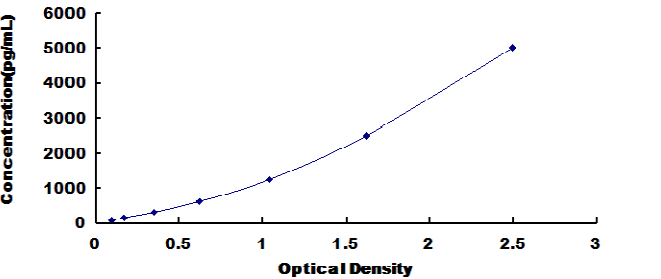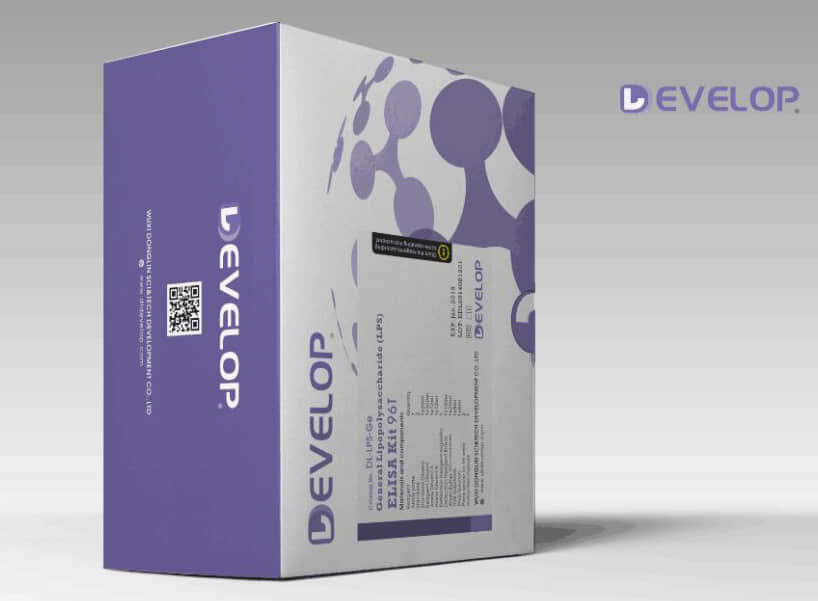Human Rho Guanine Nucleotide Exchange Factor 7 (ARHGEF7) ELISA Kit


two product lines: Traditional ELISA Kit and Ready-to-Use ELISA Kit.


Other names:PAK3; BETA-PIX; COOL1; P50; P50BP; P85; P85SPR; PIXB; SH3 Domain-Containing Proline-Rich Protein; PAK-Interacting Exchange Factor Beta
Function: Acts as a RAC1 guanine nucleotide exchange factor (GEF) and can induce membrane ruffling. May function as a positive regulator of apoptosis. May function in cell migration. Downstream of NMDA receptors and CaMKK-CaMK1 signaling cascade, promotes the formation of spines and synapses in hippocampal neurons.
Sequence:
50 MNSAEQTVTW LITLGVLESP KKTISDPEGF LQASLKDGVV LCRLLERLLP 100 GTIEKVYPEP RSESECLSNI REFLRGCGAS LRLELLFPPS QPPQHLVTTI 150 LLSASTFDAN DLYQGQNFNK VLSSLVTLNK VTADIGLGSD SVCARPSSHR 200 IKSFDSLGSQ SLHTRTSKLF QGQYRSLDMT DNSNNQLVVR AKFNFQQTNE 250 DELSFSKGDV IHVTRVEEGG WWEGTLNGRT GWFPSNYVRE VKASEKPVSP 300 KSGTLKSPPK GFDTTAINKS YYNVVLQNIL ETENEYSKEL QTVLSTYLRP 350 LQTSEKLSSA NISYLMGNLE EICSFQQMLV QSLEECTKLP EAQQRVGGCF 400 LNLMPQMKTL YLTYCANHPS AVNVLTEHSE ELGEFMETKG ASSPGILVLT 450 TGLSKPFMRL DKYPTLLKEL ERHMEDYHTD RQDIQKSMAA FKNLSAQCQE 500 VRKRKELELQ ILTEAIRNWE GDDIKTLGNV TYMSQVLIQC AGSEEKNERY 550 LLLFPNVLLM LSASPRMSGF IYQGKLPTTG MTITKLEDSE NHRNAFEISG 650 PVTPSSKHAD SKPAPLTPAY HTLPHPSHHG TPHTTINWGP LEPPKTPKPW 700 SLSCLRPAPP LRPSAALCYK EDLSKSPKTM KKLLPKRKPE RKPSDEEFAS 800PSLDSLGRRS SLSRLEPSDL SEDSDYDSIW TAHSYRMGST SRKSCCSYIS HQN
INTENDED USE
The kit is a sandwich enzyme immunoassay for the in vitro quantitative measurement of ARHGEF7 in human tissue homogenates or other biological fluids.
DETECTION RANGE
78.125-5000pg/mL. The standard curve concentrations used for the ELISA’s were 5000pg/mL, 2500pg/mL, 1250pg/mL, 625pg/mL, 312pg/mL, 156pg/mL, 78.1pg/mL.
SENSITIVITY
The minimum detectable dose of ARHGEF7 is typically less than 29.4pg/mL.
The sensitivity of this assay, or Lower Limit of Detection (LLD) was defined as the lowest protein concentration that could be differentiated from zero. It was determined by adding two standard deviations to the mean optical density value of twenty zero standard replicates and calculating the corresponding concentration.
SPECIFICITY
This assay has high sensitivity and excellent specificity for detection of ARHGEF7.
No significant cross-reactivity or interference between ARHGEF7 and analogues was observed.
You can reference link of the kit as following
https://dldevelop.com/Research-reagent/dl-arhgef7-hu.html
https://dldevelop.com/Research-reagent/dl-arhgef7-mu.html
https://dldevelop.com/Research-reagent/dl-arhgef7-ra.html
Introduction
| Item | Standard | Test | |
| Description |
The kit is a sandwich enzyme immunoassay for the in vitro quantitative measurement of ARHGEF7 in human tissue homogenates or other biological fluids. |
Conform | |
| Identification | Colorimetric | Positive | |
| Composition | Traditional ELISA Kit | Ready-to-Use ELISA KIT | Conform |
| Pre-coated, ready to use 96-well strip plate 1 | Pre-coated, ready to use 96-well strip plate 1 | ||
| Plate sealer for 96 wells 2 | Plate sealer for 96 wells 2 | ||
| Standard 2 | Standard 2 | ||
| Diluents buffer 1×45mL | Standard Diluent 1×20mL | ||
| Detection Reagent A 1×120μL | Detection Solution A 1×12mL | ||
| Detection Reagent B 1×120μL | Detection Solution B 1×12mL | ||
| TMB Substrate 1×9mL | TMB Substrate 1×9mL | ||
| Stop Solution 1×6mL | Stop Solution 1×6mL | ||
| Wash Buffer (30 × concentrate) 1×20mL | Wash Buffer (30 × concentrate) 1×20mL | ||
| Instruction manual 1 | Instruction manual 1 | ||
Test principle
The microtiter plate provided in this kit has been pre-coated with an antibody specific to the index. Standards or samples are then added to the appropriate microtiter plate wells with a biotin-conjugated antibody preparation specific to the index. Next, Avidin conjugated to Horseradish Peroxidase (HRP) is added to each microplate well and incubated. After TMB substrate solution is added, only those wells that contain the index, biotin-conjugated antibody and enzyme-conjugated Avidin will exhibit a change in color. The enzyme-substrate reaction is terminated by the addition of sulphuric acid solution and the color change is measured spectrophotometrically at a wavelength of 450nm ± 10nm. The concentration of the index in the samples is then determined by comparing the O.D. of the samples to the standard curve.
Recovery
Matrices listed below were spiked with certain level of recombinant ARHGEF7 and the recovery rates were calculated by comparing the measured value to the expected amount of the index in samples.
| Matrix | Recovery range (%) | Average(%) |
| serum(n=5) | 81-93 | 86 |
| EDTA plasma(n=5) | 80-97 | 88 |
| heparin plasma(n=5) | 90-101 | 95 |
Linearity
The linearity of the kit was assayed by testing samples spiked with appropriate concentration of the index and their serial dilutions. The results were demonstrated by the percentage of calculated concentration to the expected.
| Sample | 1:2 | 1:4 | 1:8 | 1:16 |
| serum(n=5) | 82-96% | 83-98% | 81-99% | 93-101% |
| EDTA plasma(n=5) | 88-101% | 86-95% | 90-102% | 80-93% |
| heparin plasma(n=5) | 80-91% | 82-90% | 95-104% | 79-95% |
Precision
Intra-assay Precision (Precision within an assay): 3 samples with low, middle and high level the index were tested 20 times on one plate, respectively.
Inter-assay Precision (Precision between assays): 3 samples with low, middle and high level the index were tested on 3 different plates, 8 replicates in each plate.
CV(%) = SD/meanX100
Intra-Assay: CV<10%
Inter-Assay: CV<12%
Stability
The stability of ELISA kit is determined by the loss rate of activity. The loss rate of this kit is less than 5% within the expiration date under appropriate storage conditions.
Note:
To minimize unnecessary influences on the performance, operation procedures and lab conditions, especially room temperature, air humidity and incubator temperatures should be strictly regulated. It is also strongly suggested that the whole assay is performed by the same experimenter from the beginning to the end.
Assay procedure summary
1. Prepare all reagents, samples and standards;
2. Add 100µL standard or sample to each well. Incubate 2 hours at 37℃;
3. Aspirate and add 100µL prepared Detection Reagent A. Incubate 1 hour at 37℃;
4. Aspirate and wash 3 times;
5. Add 100µL prepared Detection Reagent B. Incubate 1 hour at 37℃;
6. Aspirate and wash 5 times;
7. Add 90µL Substrate Solution. Incubate 15-25 minutes at 37℃;
8. Add 50µL Stop Solution. Read at 450nm immediately.
Order or get a Quote
We will reply you within 24 hours!














